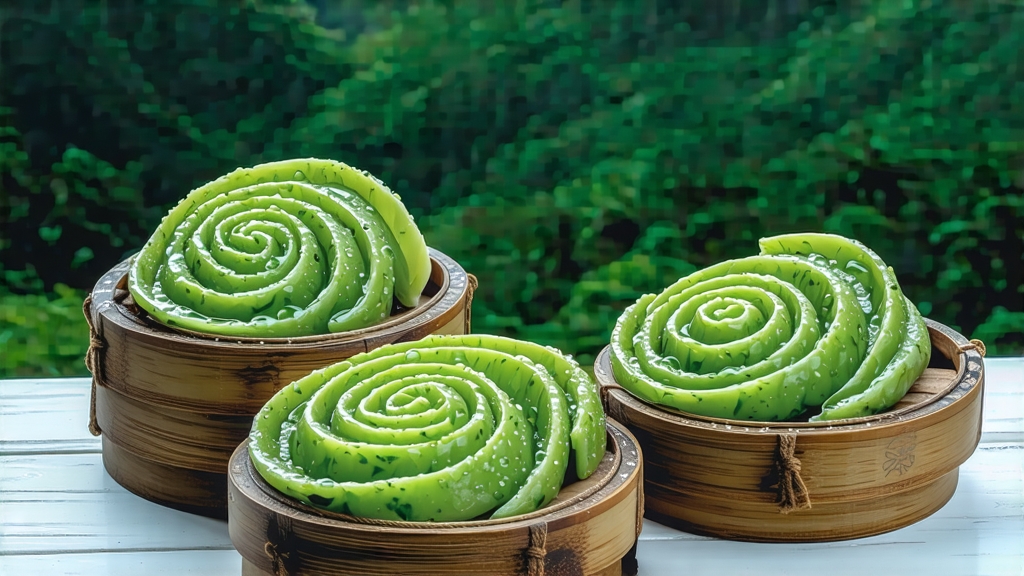
Among the jade-green pantheon of Chinese green teas, none carries the romance of lake mist and mountain spring quite like Biluochun. Its name—literally “Green Snail of Spring”—evokes the tight spiral of each downy bud, a shape so delicate that poets once compared it to a snail’s shell carved from jade. Grown on the islands and peninsulas of Taihu Lake in Jiangsu Province, this tea has captivated emperors, scholars, and now a new generation of global tea lovers who seek clarity in a cup.
Origin stories swirl like the morning fog over Dongting Mountain. The most beloved dates to the Kangxi era (1662-1722), when the emperor was traveling incognito south of the Yangtze. A nun presented him with an unnamed local tea whose haunting fragrance preceded the liquor itself. Enchanted, Kangxi asked its name; told it was “Scary-Fragrant” (Xia Sha Ren Xiang) because the scent was almost too intense, he deemed the moniker inelegant and rechristened it Biluochun, fusing the tea’s color, shape, and season in three syllables. Whatever the truth, the legend fixed the tea in the imperial canon and secured tribute status for the next two centuries.
Geography is the first secret. Dongting Mountain rises from Taihu like a green fortress; its granite spine traps lake-born mists that act as a natural shade cloth, slowing photosynthesis and concentrating amino acids. The same mist feeds camellia sinensis with a constant film of moisture, allowing the plants to flush earlier and more tenderly than those on exposed hillsides. Between rock and water, peach, plum, and apricot trees are interplanted; their roots share mycorrhizal networks with the tea bushes, and their spring blossoms rain pollen and scent onto the nascent buds. This floral entourage is not horticultural accident but centuries-old polyculture: farmers noticed that teas grown among fruit trees carried a natural, irrepressible aroma that no withering or firing could erase.
Today the appellation is strictly policed. Only leaf picked within the Xishan and Dongshan townships of Wuzhong District may claim the coveted “Taihu Lake Biluochun” seal. Even within this micro-zone, terroir is parsed to the level of individual peaks. The highest, Mingyue Ridge, yields buds so tiny that 100 000 are needed for a single kilogram; lower slopes produce slightly larger spirals with a bolder, more vegetal cup. Purists speak of “three microclimates” in one mountain: morning fog, midday sun reflected off the lake, and evening coolness descending through pine forests. A tea master can taste these diurnal swings in the balance between sweetness and astringency.
Plucking begins when the lake is still silver with dawn and the air smells of bruised peach leaves. The standard is ruthless: one bud plus the unfolding first leaf, no longer than 2.5 cm, harvested before the dew evaporates so that enzymatic oxidation is arrested at its quietest. Experienced pickers finish each shoot with a soft snap of the fingernail; any tugging bruises the cambium and invites premature reddening. A full day’s work yields barely 500 g of fresh leaf, which will shrink to 100 g after firing—reason enough for Biluochun to command prices higher than silver by weight.
The crafting choreography that follows has changed little since the Qing. First, gentle withering: the leaves are laid in bamboo trays no deeper than 3 cm and rested for two hours in a shaded corridor where lake breeze wicks away surface moisture. The goal is not desiccation but limpness; the picker’s nail mark must fade, indicating that cell walls are relaxed and ready for shaping.
Next comes the kill-green, performed on a cast-iron pan heated to 180 °C. The tea maker tosses 250 g of leaf into the dome of heat, then flips and presses it with bare hands in motions reminiscent of kneading dough. For three minutes the leaf sizzles, exhaling grassy steam; polyphenol oxidase is denatured, locking in the jade hue. Fingers are the thermometer: when the leaf feels like warm silk and the aroma shifts from raw bean to fresh chestnut, the temperature is dropped to 120 °C and the true shaping begins.
Here Biluochun earns its spiral. Using a whisper-light technique called tiao, the